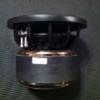-
Recently Browsing 0 members
No registered users viewing this page.
-
-
Recent Topics
-
- 397 comments
- 32,980 views
-
- 1 comment
- 47 views
-
- 4 comments
- 112 views
-
- 17 comments
- 282 views
-
- 2 comments
- 717 views
-
- 5 comments
- 1,550 views
-
-
-
Recent YouTube Posts



